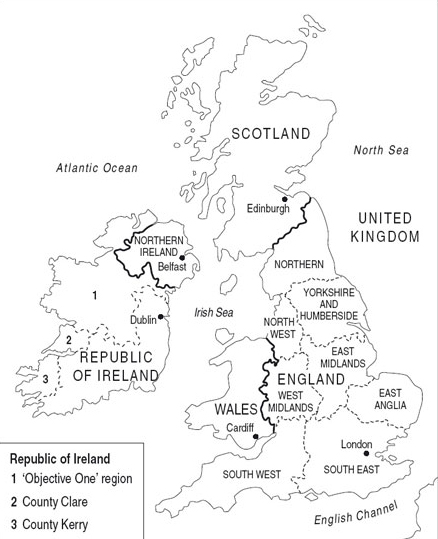2.3 Diversity within states
There is no simple or necessary correspondence between types of region and types of regionalism. But clearly-demarcated and long-established regions are a more likely basis for strong regionalist or nationalist movements, while top-down regionalisation often results in regions with little popular identity or awareness of the region by its own inhabitants. Pre-existing regional diversity provides an uneven basis for regionalising a whole state. For example, regionalising the UK is relatively easy in the case of Scotland, Wales and Northern Ireland, but extremely problematical for English regions (see Figure 1).
This is perhaps especially so in the central ‘Midlands’ area where there are no clear boundaries. But even in the relatively strong Northern Region there are problems: the ‘Campaign for a Northern Assembly’ was transmuted into a ‘Campaign for a North-East Assembly’ which now covers only the eastern half of the region, much to the annoyance of remaining campaigners to the west. Similarly, in recently regionalised Spain, there are ‘strong’ pieces in the jigsaw, such as the ‘national’ regions of Catalonia, the Basque Country and Galicia, with their own specific cultures and languages and memories of a time when they were independent or had autonomous political institutions and laws; but there are also small newly created regions such as Murcia and tiny La Rioja which filled awkward gaps between more established regions.

